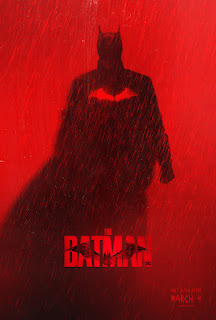The Batman - A Real Anti-Hero
Thoughts On: The Batman (2022)
A return to the archetypal antihero.
I am not the biggest fan of Christopher Nolan's Batman films: they're bland. Unpopular opinion; I do not think the Dark Knight Trilogy is bad, I simply find it rather plain. My core gripe with these films are their uninspired projection of the Dark Knight archetype. Consider this question in regards to Nolan's Trilogy: How does the Joker or Batman go place to place? How do they travel to their respective lairs, hideouts and key plot points?
Cinema is defined in large part by a simple principal. Alfred Hitchcock has alluded to it, and many people know of this - it is close to a cliché: Cinema is life with all the boring bits cut out. The exemplar of this ideal can be found in an editors' approach to a location change in a movie. The classical method of a significant temporal or spatial change is roughly as follows: character shown leaving a set, fade to an establishing shot of new location, character enters new location (building), establishing shot of new space or transition through building, character in new location. What is often characterised as a New Wave or experimental means of transition: character thinks of leaving; character is in new location.
Cinema is life with all the boring bits cut out. However, what is boring, to what measure does the normal need to be retained for a story to be followed and what is life? We approach now the topic of realism. This is the principal we have alluded to that defines so much of cinema. Christopher Nolan's Dark Knight films are lauded for their realistic take on a previously melodramatic series of films. One can only waste their time in judging the value of a film on its dramatic approach; opinion here is very boring. Speaking plainly, we have seen a transition in the Batman films from unrealistic to realistic dramatic projection. Reeve's Batman is the pinnacle of realism as it concerns Batman and my understanding of the character, not for its 'realistic portrait' of x, y or z, but for the means through which 'realism' is used to conjure meaning and affect. This is all to say that, embedded into The Batman, is a spectacular exemplar of what I perceive to be true realism and how to use it in a story.
Let us return to the initial question: How does the Joker or Batman go place to place? Realism would dare one to answer this question cinematically. This question is a logical nightmare for a writer and huge technical ask for a filmmaker; how does one show how the Batman plan his routes, run his admin and physically move from shadow to shadow. The fact is, these questions are rarely answered and usually ignored by Nolan. I complain not; the Dark Knight films do not need to answer anything. But, from the perspective of questioning the real as to generate story, the fact that this is not answered with any real substance reveals much of why I feel the story is unstimulating. Consider: what does it mean to travel. How a character (person) travels reveals an almost infinite amount about their self and place in the narrative: can they afford a car, do they walk with a limp, do they travel with a mob, are they running from a dinosaur. Movement is life; cinema replicates this as drama. Cinema is drama: life as it moves, or life with the boring bits (the norm, stagnation and repetition) cut out. To choose not to depict Batman's movement from crime scene to lair has a huge impact on Nolan's films. We think never of a Batman in minor action. Reeve's version is founded on these basic, truly realist possibilities in drama.
And such leads to the larger point I mean to make here: who is Batman, why do we watch stories featuring this character? The philosophy behind the Dark Knight trilogy is laid out quite plainly in the title. Batman becomes the Dark Knight in Nolan's films; he embodies darkness and is the antithesis to light, manifested as such as to reflect the true nature of their juxtaposition; he is also a servant to a throne, a citizen of moral and political obligation. Batman is that which then services his kingdom in the dark and as a product of it; he is the moral force of the 'king' of this place that works where light cannot reach. The throne of Gotham, however, is shown to be empty, and so the primary questions that the Dark Knight trilogy presents to its character concern the source of his morality, guidance and loyalty. Batman is then isolated in the overtonal montage of the trilogy so that choice can be singled out as the primary dramatic element of the story and character. This has it's merits, but I ultimately find it a bit bland to experience cinematically.
Batman is far more real in this new version, and it struck me for that reason. It shows that realism is an aspect of drama; drama is meaningful action; consequence and gravity drip from this narrative because of its uncanny revelation of, not the alien, but the common absurdity of the Batman narrative that is all in actual fact a rendition of a very familiar and simple story. Consider for a moment: Batman is commonly a brooding anti-hero who works and is presented in shadow. The audience sees more than the archetype via their access to Bruce Wayne in this version. But, nonetheless, this Dr Jekyll, Mr. Hyde syzygy is presented rather traditionally with there being a key separation between human and monster. The lines between Batman and Bruce Wayne are then simultaneously blurred and made ever more clear. And such makes this film a success as a realistic character study. That said, I'll need to watch it again to delve deeper.










